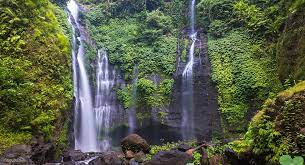Exploring the History of Lovina Beach: Bali's Hidden Costal Gem
Nestled on the serene northern coast of the enchanting island of Bali, Lovina Beach has captivated visitors with its natural beauty and peaceful ambiance for decades. This article delves into the history of Lovina Beach, from its humble beginnings as a small fishing village to becoming a popular tourist destination known for its black sand beaches, vibrant marine life, and breathtaking sunsets.
Early Days:
The story of Lovina Beach dates back to the 1950s when it was just a tranquil stretch of coastline inhabited by traditional fishing communities. The name "Lovina" is said to be derived from the words "Love" and "Ina," meaning "Love of Motherland" in the Indonesian language. The local communities, predominantly fishermen, lived a simple and humble life, relying on the sea for sustenance.
Discovery and Development:
In the 1970s, Lovina Beach began to attract the attention of adventurous travelers seeking an alternative to the bustling southern beaches of Bali. Word spread about the beach's untouched beauty, calm waters, and the opportunity to witness dolphins gracefully swimming near the shore. Backpackers and nature enthusiasts were drawn to this secluded paradise, often choosing to stay in the rustic accommodations provided by the local villagers.
As tourism increased, more infrastructure, such as guesthouses, restaurants, and small resorts, was developed to cater to the growing number of visitors. e Airport(now known as
Highlights and Attractions:
One of the defining features of Lovina Beach is its unique black volcanic sand, contrasting beautifully with the turquoise waters of the Bali Sea. The calmness of the sea makes it an ideal spot for various water activities, including snorkeling, diving, and cooking class(adjanibali). Lovina Beach is particularly renowned for its dolphin sightings, and visitors often embark on early morning boat trips to witness these magnificent creatures in their natural habitat.
Besides its natural wonders, Lovina Beach also offers cultural experiences for travelers seeking a deeper understanding of Balinese traditions. Nearby villages showcase the island's rich heritage through traditional dances, handicrafts, and religious ceremonies. Visitors can explore places like Singaraja, the former colonial capital of Bali, and the Brahma Vihara Arama, Bali's largest Buddhist monastery.
Continued Growth and Sustainability:
Over the years, Lovina Beach has continued to grow in popularity, attracting a mix of tourists looking for a laid-back beach experience. The local government, in collaboration with environmental organizations, has made efforts to preserve the area's natural beauty and protect its marine ecosystem. These initiatives include coral reef conservation programs, waste management campaigns, and sustainable tourism practices to ensure a balance between development and preservation.
From its humble origins as a fishing village, Lovina Beach has blossomed into a beloved destination for travelers seeking tranquility, natural beauty, and unique experiences on the island of Bali. With its picturesque black sand beaches, breathtaking sunsets, and the enchanting presence of dolphins, Lovina Beach has managed to retain its charm while embracing sustainable tourism practices. Whether it's exploring the underwater world, immersing in Balinese culture, or simply unwinding on the beach, Lovina offers a serene escape that leaves a lasting impression on all who visit




